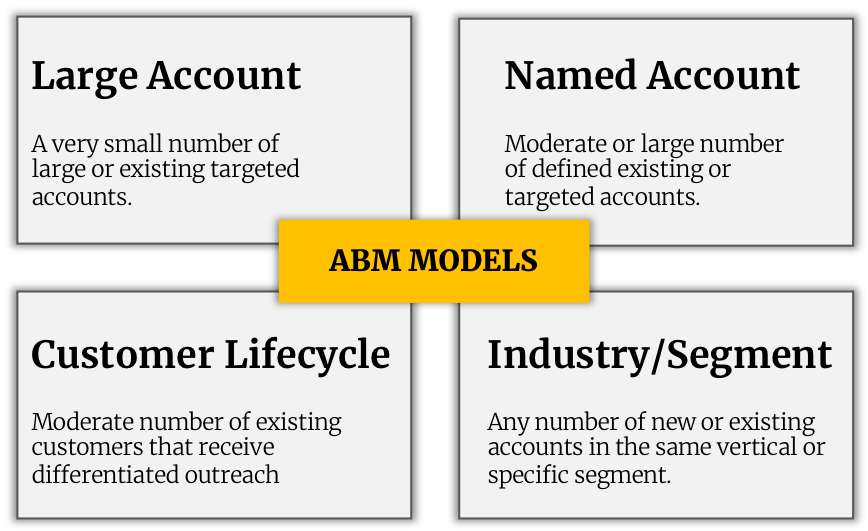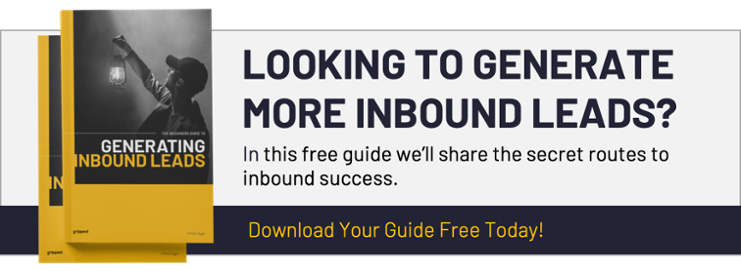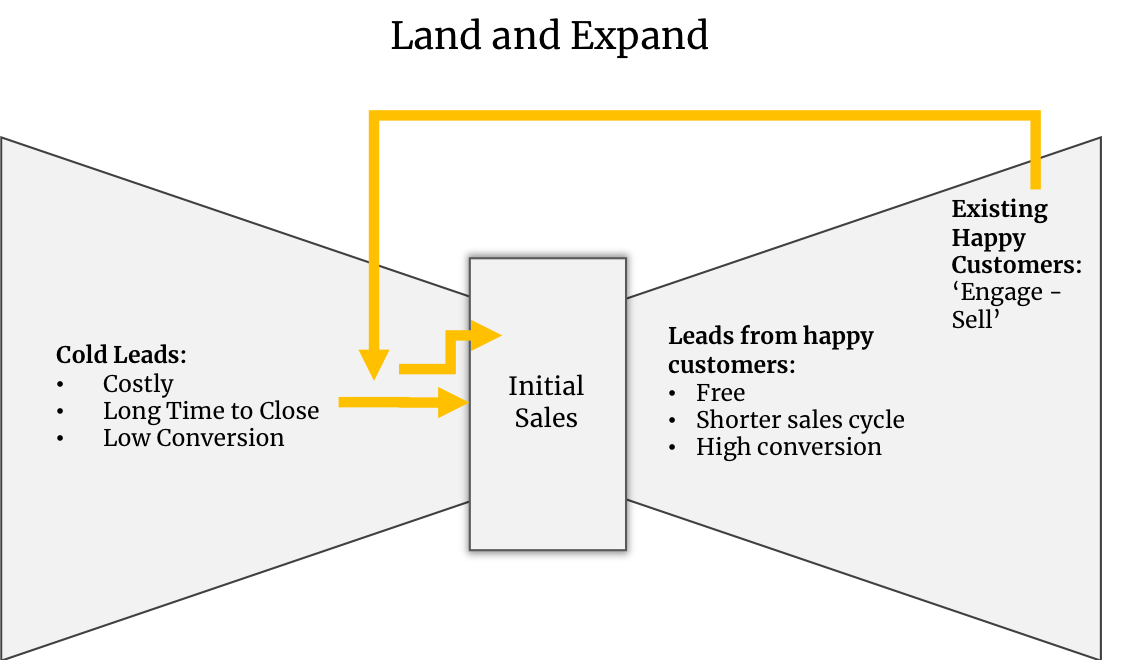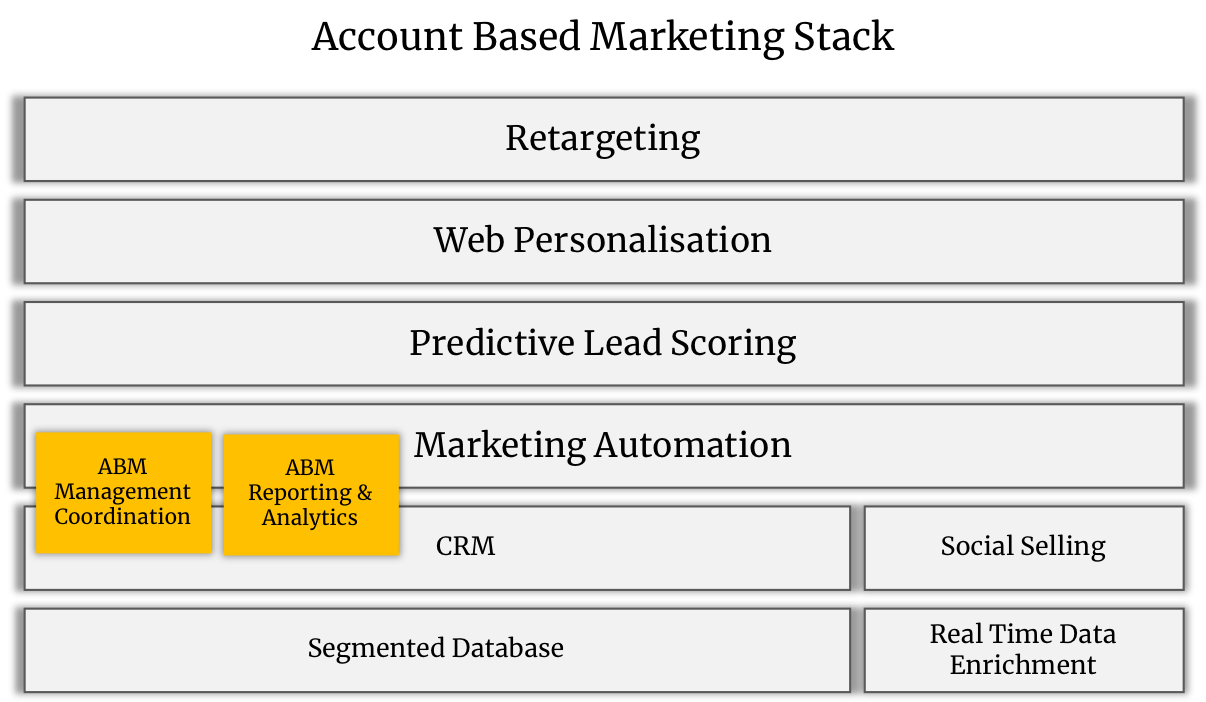Before we start its worth saying that this is a long read. But for a subject like Account Based Marketing for B2B we thought it worthy of a long form article. So let’s get started!
Too much of a good thing will kill you. Drink more than 6 litres of water in less than an hour and you could end up in hospital with hyponatremia. But, go three or four days without a drink and you’ll die. Go more than a few hours and you’ll end up dehydrated.
Marketing is complex, especially in B2B markets that are dominated by major players. But marketing has to be applied in the right amounts and in the right context. It has to be employed with tact.
Spam doesn’t work, pestering doesn’t work. You need to inform and engage to earn trust. Your buyer has to want and appreciate the interaction, otherwise you often do more harm than good. This article will look at how account-based marketing strategies can be diplomatically employed to expand your business and boost sales.
What is account based marketing (ABM)?
Account based marketing is traditionally a B2B strategy. In this context, it is easily understood as actions guided by the recognition that the ‘buyer’ is not any individual — it is the business. This is obvious, B2B means ‘businesses selling to businesses’. However, on the sales floor, it doesn’t always feel that way. Salespeople develop ‘leads’ (individuals within a company with whom they interact) build rapport and close the sale.
Account based marketing is a guidance system that places these relationships in the context of what matters — the business that is the ‘customer’. It starts with the obvious. Sales and marketing actions are directed to follow only the leads that are linked to companies capable of being buyers. Rather than looking to generate as many leads as possible, ABM encourages marketers to focus their efforts solely on people who work in businesses that want what you have to offer.
Individuals are made relevant to the buying process by their proximity to a business, and individual leads within a business are just one connection on the way to a sale. In fact, the value of these individuals to a sale is often their ability to provide contact with other, more important stakeholders within that company. Account-based marketing seeks to capitalise on this realisation by looking at collections of leads as discrete accounts and approaching each account and individual with a personalised and metrics oriented strategy.

Where account-based marketing (ABM) goes wrong!
Old school account-based marketing is targeted outbound marketing. You choose a set of companies, access database information and make contact through email campaigns, cold calling, posting letters and engaging with key stakeholders at events. Then, contacts within a company are leveraged to gain access to more leads, but approached in a generic, clunky and transparent way.
This is still technically an account-based marketing strategy. However, it is cold, soulless and unlikely to work.
The internet changed everything — sales and marketing are no exception. All marketing teams use the internet as a channel and a source of information. Some teams understand how it has changed research habits and buying patterns. What marketers need to really recognise, however, is how the internet has changed expectations about interactions.
People have become conditioned to expect personalised and value-driven interactions. Account-based marketers need to take notice and up their game. This is why it is essential to integrate inbound strategies into any effective ABM plan.
How to implement account based marketing or how to do account based marketing (ABM) the right way
ABM personas
Personalising marketing starts with ‘buyer personas’. This means thinking about the ideal person that you want to speak with to make a sale. This sounds counterintuitive considering ABM is supposed to be all about the ‘company’, right? This is true, but you still need to appeal to individuals who work there. In fact, you probably need to think about several of them.
When thinking about ‘personas’, however, you do need to consider the context of their company. It can help to start by making a list of the companies that you want to sell to, and then think about the people you need to convince in those types of firms to help you close a sale. Consider the industry, company size and location. Then think about the role of personas, their budget and whether or not they are a decision maker or an influencer. These things will all allow you to target the right person in the right way.
It is also important to create a list of companies to which you want to sell. However, personas are fundamentally more important to your strategy. For example, if you sell cybersecurity software that you believe will be of particular use to banks, you will likely want to target CISOs and CIOs. The CISO at Barclays, HSBC and Halifax will all have similar motivations and priorities. To a degree, the same holds true for a smaller company like TSB or even Monzo.
How you contact these people will be similar. Although it is important to be conscious of your ideal ‘customers’, some aspects of your ABM strategy will help you target all of these potential customers simultaneously. These people might also know each other and may be able to help you gain contact with other valuable leads within different accounts, just as leads within an account can help you expand contact within that business.
How do you build data for account-based marketing success?
Start with your ideal and work your way down.
Begin by thinking about ideal personas within ideal companies. Then expand that thought process to include people that may not be able to single-handedly deliver a sale, but will be more approachable and may enable you to contact your ‘ideal persona’.
You can categorise these people in descending lists as they relate to specific types of companies. If you sell multiple products, think about making multiple ‘persona trees’ for the same type of business. Think about how these roles will be different depending on size, sector and territory of the business.
Once you have mapped this out in the abstract, overlay it with your list of ideal customers (‘real companies’) and see if you can start populating your persona trees with actual names and contact details. See if you can determine whether or not these different people operate in similar social or professional networks. Learn everything you can about the people and companies.
Build your account based marketing plan by creating content targeted at different account personas (inbound ABM)
Once you have a list of buying personas, a list of companies and a list of useful supporting contacts within those firms, start writing content marketing that is relevant to these different people. This is where your inbound marketing strategy aligns directly with your account-based approach.
You need clear, relevant, helpful and valuable content targeted at each known persona you wish to contact. It should help them, but also weave in information about what your company has to offer. Don’t be overt. Simply highlight opportunities or deficiencies that, upon further inspection, the reader might realise you could deliver or alleviate. At this first stage, however, your goal is simply to be helpful and engaging. Content marketing is an opportunity to showcase your own expertise.
The reality is that nobody cares about your company. They don’t even really care about your product. They are interested in improving themselves, their relationship to their employers and their company’s bottom line. Content marketing is designed to do that — for free. It is information that can make them better at what they do or teach them something new. Ideally, it might provide them with information that can make them look good to their colleagues and managers.
This is actually ideal, particularly for content marketing directed at people who aren’t decision makers. If you can seed an idea in the head of an influencer, they become your advocate within their company. This might simply start by raising awareness about something you want publicised. Later, after direct contact, that may turn into direct advocacy for your brand.
Ultimately, if these steps feel too complicated or you don’t have the resources to implement them, an agency can help. Check out our top 10 guide to the best B2B ABM agency picks.
What is the most important stage of the account-based marketing funnel?
Using the ‘buyer’s journey’ to create account based marketing content
The buyer’s journey is an important thing to understand. It is the process buyers go through as they become aware of, evaluate and then purchase a product or service. To better target your account based marketing content you need to understand three core steps you’ll take prospects through.
- Awareness: This is when a buyer might first become aware of your brand. They are looking to solve a problem, find an answer or meet a need. They want high-level educational content to get them pointed at an answer.
- Consideration: At this point, the buyer has defined their problem and is looking for specific information to solve it. They want more detailed information roadmapping an actionable solution.
- Decision: At this point, the buyer has made a decision and is simply looking for confirmation that what they have chosen is the right choice.
From a content marketing perspective, you want to make sure that you have at least one piece of content targeted at each identified persona for each stage of the buyer journey. You need to answer two questions — who wants your product or service and what does their path to a decision look like. Then write content that fits those criteria.
Get the right ABM content in front of the right people at the right companies
The next stage is getting your content out there. This means using all of the channels at your disposal. But, it is essential to be unintrusive. You will be most effective if you can engage with people on their own terms. You should send emails, social media DMs, direct mail etc. However, good content will draw people in. Start with an emphasis on inbound tactics and test your luck at building a list of naturally acquired contacts.
This sounds hard, however it really just means starting a blog and then pushing your material on social media. Think about mentioning the people or companies you are interested in engaging directly in your content or promotional posts. Companies are often on the lookout for social media mentions. If flattering, they are likely to promote them themselves. At the very least, it is likely that someone in their marketing team will take notice. This could be your first ‘in’ to developing leads within the account. You can then employ retargeting strategies to further engagement.
Take personas into account for targeted promotion
How you promote content will depend on the persona you are targeting with that material. Are they likely to frequent LinkedIn, Twitter, Facebook, Quora, industry blogs, all of the above? Think about search phrases they are likely to use on Google — bake these terms into content using SEO principles. Consider how different stages of the ‘buyer’s journey’ are likely to impact how individuals will be most likely to engage with and find content.
This part of your account-based marketing strategy is about sparking interest. It is the first stage in a sales funnel that pulls leads closer and allows you to unobtrusively begin to engage with accounts. You should pair normal content with gated material to capture email addresses, build contacts and then re-engage.
How do you build data for account-based marketing success?
You will have likely developed a list of companies you wanted to target earlier in this process. However, if you began by solely thinking about personas, it is now time to get specific about companies as well. Take a list of your ideal customers and compare it to the results of your inbound marketing efforts — are there crossovers?
- Look at company specifics: Compare the companies, demographics, job titles and location information of the people in your database against the leads you have collected.
- Consult with your sales team: Sales team members that have experience managing accounts can help you spot ideal leads.
- Prioritise: Look at the different developing accounts and differentiate them based on which ones you think are the most mature, most easily persuaded to a sale and which will bring in the most revenue if landed.
- Use metrics: Once you have developed accounts, use scoring systems to determine how accounts are actually engaging with your company.
- Filter results: Automation tools within inbound platforms such as Hubspot allow you to easily track companies. Some database filters allow you to create an integrated company profile where you can see associated contacts and add additional information such as past and future engagements.
What are the steps to accelerate b2b account-based marketing campaigns?
Land and Expand ABM Strategies
Critical to account-based marketing strategies is using leads to expand contacts. You need to make sure you are engaging with as many people within an account as possible. The first thing that will help you do this is your content itself. This can be done in three ways.
- Particular pieces of content can be crafted with the explicit aim of being shared. The goal is to create something that an influencer will want to share with decision makers. Think about writing specific content designed to help individuals make pitch proposals to their managers or explain a cutting-edge idea in detail. The motivation for sharing content is often to make that person look good.
- Make content that is easily shareable. Embed links in blogs. Including links in thank you pages and follow up emails for downloadable premium content. Make it as easy as possible for readers to share your material.
- Write engaging content. Good material is much more likely to be shared than boring fluff. If you can deliver valuable content the right people are more likely to find it. They are also more likely to pass it on.

With these prerequisites in order, you can then actively engage with leads to further contact. Use company-level data to pursue those conversations and bring individuals and accounts through your marketing funnel. This includes three things:
- Drip email campaigns: This is where modern ABM strategies begin to align with traditional techniques. You should set an automated email campaign to deliver marketing emails on a schedule that aligns with persona/account interests and their assessed stage in the buyer’s journey.
- Customise your website: Advanced website design allows you to personalise what people see based on who they are, where they are and what they have done. This can be done on a completely individualised basis, or in an automated fashion dependent on an individual’s history of interactions with your online material.
- Use online ads: Online ad platforms continue to grow in sophistication and utility. You can target people based on their past interactions with your material. They can be customised to match specific contexts or the interests of buyer personas. Depending on the available information, they can be set to follow people across devices and IP addresses. Use a platform that can be synchronized with your CRM system for ease of use. Target ads at leads within your accounts and people you want to establish contact with.

Drip email campaigns, however, are not ‘cold emails’. Ideally, they are emails that individuals signed up to receive through engaging with other content. Embed CTAs (calls-to-action) across your web presence that advertise newsletters and other forms of content. If you write good content, people will volunteer their information.
This can be done in an entirely automated fashion in which the actions of the individuals on your website direct what they receive. For even more customisation, marketing staff can review leads. Ultimately, the more targeted, the better.
Online retailers use these techniques regularly to change prices depending on your location and search history. This is why it is good practice to clear your cookies when searching for airline tickets.
You can use this technology to change the calls-to-action that people see, the graphics in the background or the order of blogs on a landing page. The options are really only limited by time and your website design capabilities.
Account-based review: Metrics, revise and revisit
You need to continuously comb over your progress. Look at the number of leads generated, click rates and website conversion statistics. Beyond that, however, you need to remember that you are approaching leads from an account-based perspective. This means a thorough understanding of company-level information.
- Keep updated: Companies change. It is important to remain on top of developments in companies that you are targeting. Regularly keep on top of staff turnover and growth. Make sure that your contacts and company lists stay relevant. If leads leave one company, can you use them to open a new account at their new job?
- Expand within accounts: It is important to look at each account as a separate entity. You should categorise and track your expansion within accounts. Look at how engaged leads are and see how the contacts you have made stack up against the ‘ideal personas’ you are striving to contact within that account. You can break down your accounts based on the types and number of leads with which you have made contact.
- Grow accounts: In addition to expanding contact within accounts, you need to be conscious of your ability to gain new accounts. Break down your contacts by lifecycle stages and investigate where each account originated. Look to see if there are correlations between where accounts originated, how you interacted with them and the end results. Use that information to attempt to duplicate your best results.
- Cross-reference content: You should look at how different accounts and personas engage with your content. What are the most popular pieces of content per persona and per account? Try and duplicate your most successful material. Attempt to cross-pollinate material between accounts if it seems relevant.
Account Based Marketing: A Practical Guide -Summary
Summary: Account-based marketing (ABM) is about targeted, tactful repetition — you need inbound and outbound strategies
Diehard old school ABM experts will argue that inbound marketing is wasteful. Its energy and focus is too broad and forces marketing teams to process leads that are of no use — detracting from the point of account-based marketing strategies.
There is truth to this. However, it misses the point. Bringing inbound strategies into account-based marketing is about updating ABM to meet the changes in expectations brought about by the internet.
It is also simply inaccurate to look at content marketing and social media campaigns as ‘mass marketing’. Although inbound strategies cast a wide net, you only follow leads that fit into your wider account-based priorities. When done appropriately, a lot of thought goes into crafting specific messages, keywords, framing and topics to attract exactly who you are looking to contact.
For example, writing a blog about the best-in-class AFA storage systems for SAN integration isn’t material for the general public. It is something only likely to be found by an individual looking to make such a purchase in a B2B setting — exactly the type of person someone writing that blog would likely want to speak with.
The other dramatic benefit of investing in inbound marketing is longevity and cumulative impact. Content marketing expands your overall web presence and collectively improves SEO. Further, most blog posts will remain relevant for years to come. Investing in writing content marketing provides a bedrock of material that will continue to bring in contacts long after you switch directions.
Populating a blog with a core of targeted and valuable material will allow you to open accounts in the future with companies that didn’t even exist when you first put together your ABM target lists. When these strategies are partnered with more traditional ABM methodologies, they allow you to initiate contact unobtrusively and engage while continuing to provide value. This is key to engendering goodwill throughout the entire sales processes.
People have become conditioned to expect personalised interaction. Beyond that, they have been empowered to undertake complicated product research at their leisure. Account-based marketers need to take notice. Creating a hybrid inbound/outbound account-based strategy is one of the most successful ways that B2B businesses can accommodate this new reality and succeed using a new breed of marketing techniques.
If you like what you’ve heard or have comments I’d love to hear and if you find it useful please share!
